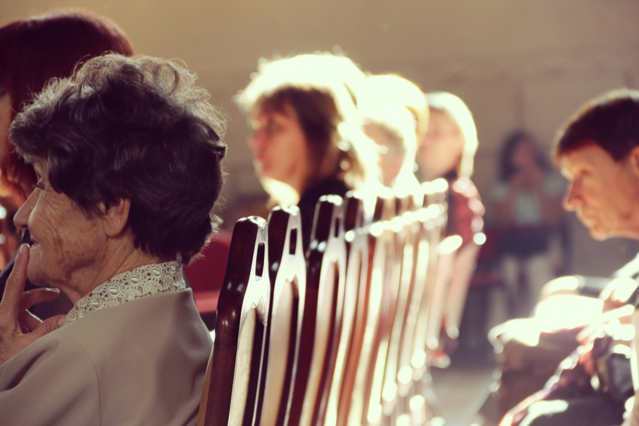Religion
Why Are Old People So Religious?
Do older people “get” religion? Or have they had it all along?
Posted February 16, 2016
This post was written by Steven Jackson.
The stereotype of the elderly churchgoer is deeply ingrained in the American psyche. Many of us assume that the older you get, the more religious you become—and the evidence seems to support that assumption.

An ongoing survey of religion in America by the Pew Forum finds that while 48% of adults 65 and older go to church on a regular basis, the proportion plummets to just 27% among 18- to 29-year-olds (so-called Millennials). When asked about the subjective importance of religion, 65% of older adults—but only 40% of Millennials—say religion is very important to them. No matter how you slice it, Millennials are less religious than previous generations.
Some developmental psychologists and theologians have posited that religion—and spirituality more broadly—creates a sense of meaning and coherence in one’s life that becomes especially important during the final stages of human development (Fowler, 1981; Tornstam, 1997). Some social psychologists have suggested that religion helps soothe fear and insecurity about one’s own mortality (Vail et al., 2009), especially when religion offers immortality. Because aging tends to amplify these concerns, the thinking goes, religion becomes more important to people as they get older.
Unfortunately, most surveys of religious beliefs and practices present a static snapshot of a population, fixed in time. As a result, it’s difficult to separate individual aging effects from social cohort effects. Did the older adults in the Pew study become more religious because of the psychological needs that come with advancing years (an aging effect)? Or have they always been more religious because they were born and raised at a time when religion was more central to American life (a cohort effect)?
Luckily, there’s a longitudinal data set that can disentangle age and cohort effects by comparing religiosity across nations and cultural groups. The World Values Survey and European Values Study (WVS/EVS) are large-scale international projects that periodically measure human values, beliefs, and attitudes. Unlike most surveys of religiosity, WVS and EVS researchers revisit their target population every 5-10 years and ask the same questions again. With this kind of study, one can determine if older adults are more religious because they’re getting older or because they belong to a particular generational cohort.
In 2015, researchers David Hayward and Neal Krause at the University of Michigan investigated two markers of religiosity within the surveys—the subjective importance of God and how often people go to church. They plucked all the information from the WVS/EVS about those two markers and were left with a whopping data set: 726,977 respondents ranging in age from 12 to 104 years old, representing 80 countries, over a 33-year span (Hayward & Krause, 2015).
After extensive number-crunching, they concluded that people everywhere do, in fact, get more religious as they age. Whether you’re a Gen-Xer or a Baby Boomer, you’re likely to become more religious as you get older.
But an interesting pattern emerged when the researchers made cross-cultural comparisons. The age effect was especially large in Western cultures, Latin America, and Confucian countries, but the effect was markedly smaller in Southeast Asia and the Islamic world—and barely present at all in Africa.
The pattern they observed calls into question the claims made by psychological theories of aging and religiosity. Perhaps late-life identity crises and fears of mortality are not universal human experiences at all. Or if they are, maybe people in different countries cope with their fears in different ways, ways that don’t always involve religion. Or maybe some people—Muslims, for example—are so religious throughout their lifetime that it’s not really possible to become more religious in old age.
We still don’t fully understand the intersection of religion, psychology, and culture. But the WVS/EVS data and the study by Hayward and Krause bring us a little closer, show us how complex the intersection is, and point us in a fruitful direction for further research.
To learn more about this very interesting data set, check out the World Values Survey and the European Values Study. It’s fascinating stuff.
Sources:
Fowler, J. W. (1981). Stages of faith: The psychology of human development and the quest for meaning. San Francisco: Harper & Row.
Hayward, R. D., & Krause, N. (2015). Aging, social developmental, and cultural factors in changing patterns of religious involvement over a 32-year period: An age-period-cohort analysis of 80 countries. Journal of Cross-Cultural Psychology, 46(8), 979-995.
Tornstam, L. (1997). Gerotranscendence: The contemplative dimension of aging. Journal of Aging Studies, 11(2), 143-154.
Vail, K. E., Rothschild, Z. K., Weise, D. R., Solomon, S., Pyszczynski, T., & Greenberg, J. (2009). A terror management analysis of the psychological functions of religion. Personality and Social Psychology Review, 14(1), 84-94.




